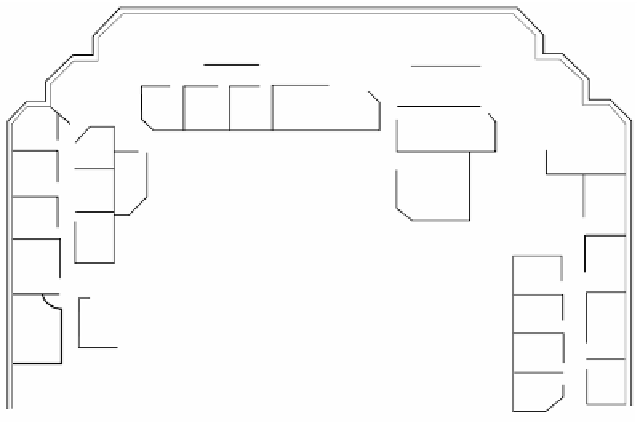Environmental Engineering Reference
In-Depth Information
Figure 11.15
Ventilation effectiveness (decimal fraction) in different spaces in an
office building. (From Farant, J.P. et al.,
Proc IAQ '91: Healthy Buildings
, ASHRAE,
Atlanta, 1991. With permission.)
may result when supply air dampers are improperly adjusted or main-
tained. They may cause high velocity flows in some areas and much lower
flows in others. Occupants in high velocity flow areas may complain of
annoyingly high air velocities, while in other areas occupants report a lack
of air movement.
Imbalances may occur when spaces are provided with supply air but no
return air, or return air without supply air. Such circumstances occur in
buildings with moveable partitions and in those remodeled to provide
closed-door offices without reconfiguring supply and return air outlets
accordingly. It is not uncommon for enclosed spaces to have no return air
flows through ceiling or door grilles.
iii. Cross-contamination. A common IAQ/IE problem in multipur-
pose buildings (e.g., hospitals, research laboratories, commercial buildings,
and industrial buildings with adjoining office spaces) is contaminant move-
ment from high-generation areas to other parts of the building. Cross-contam-
ination occurs when pressure differences exist between building zones served
by different AHUs. Cross-contamination is one of the most frequently encoun-
tered problems in problem-building investigations. It is commonly perceived
by occupants as chemical odors or as an odor-out-of-place phenomenon.
Cross-contamination complaints arise when contaminants migrate from
special-use areas where odors and even minor symptoms associated with
solvents and other source materials are tolerated to areas where they are not.
An example of cross-contamination associated with shops in a strip mall
is indicated in
Figure 11.16
.
In this illustration, air flows into the restaurant







































































































